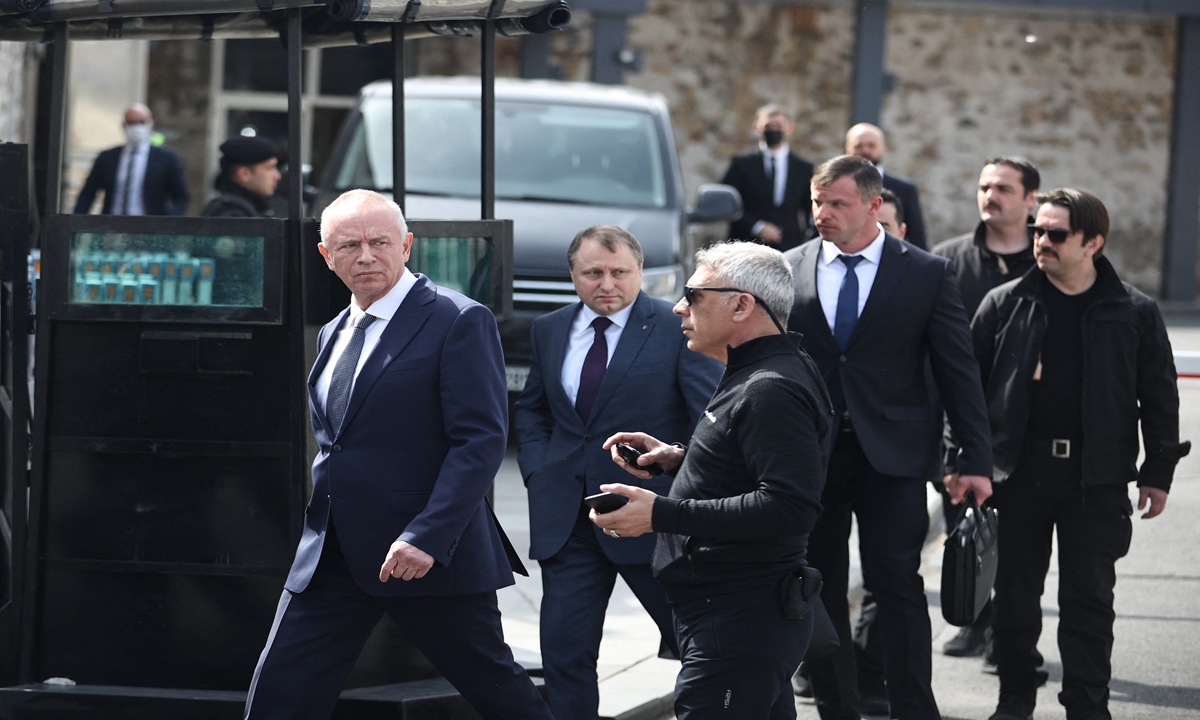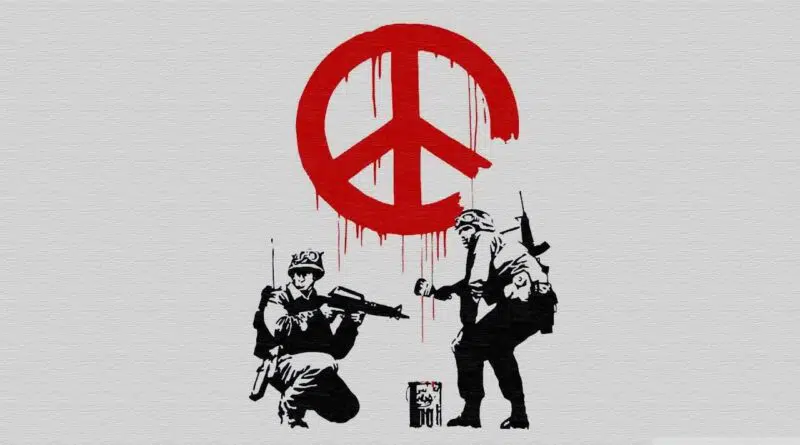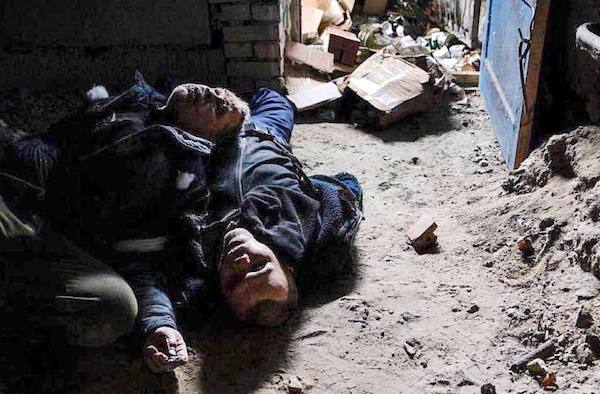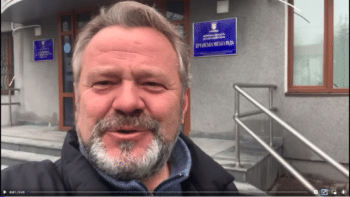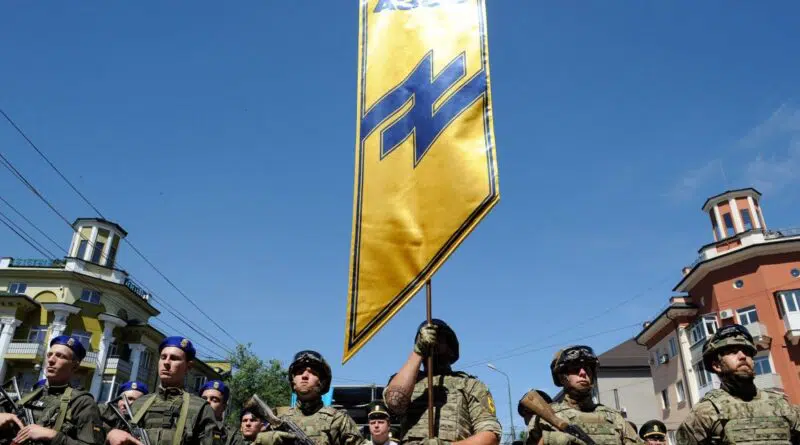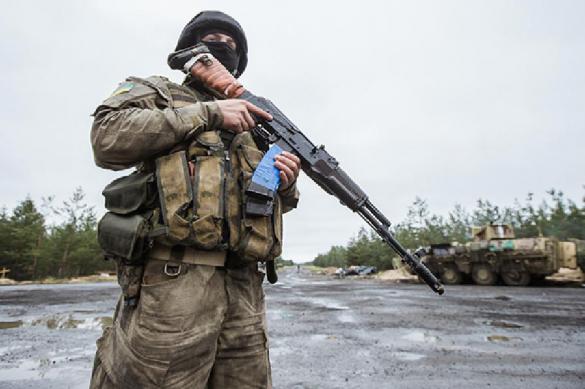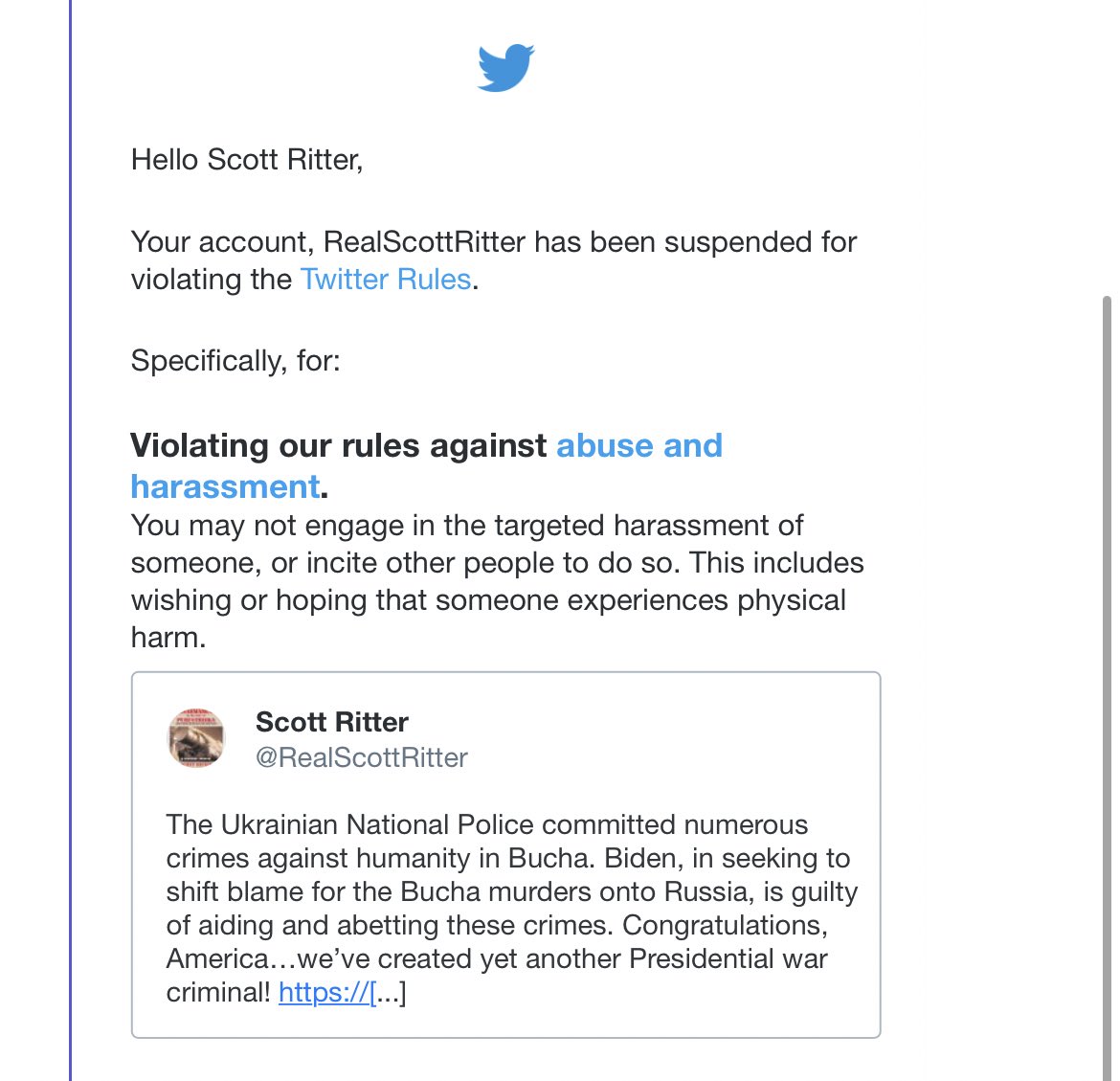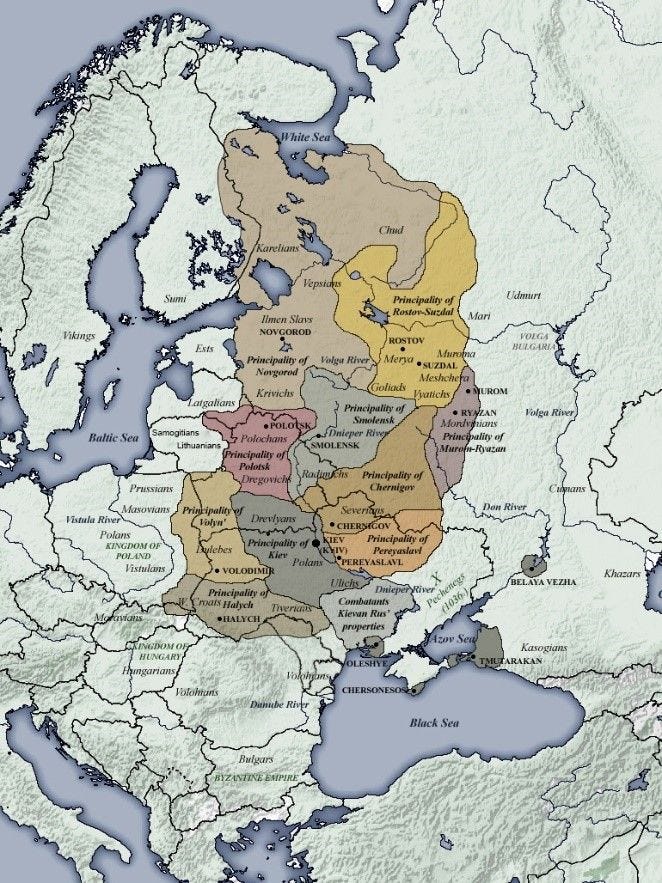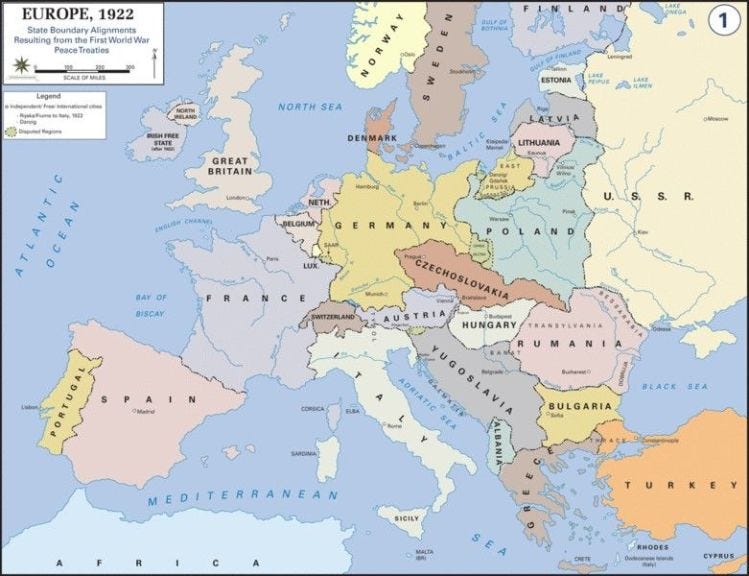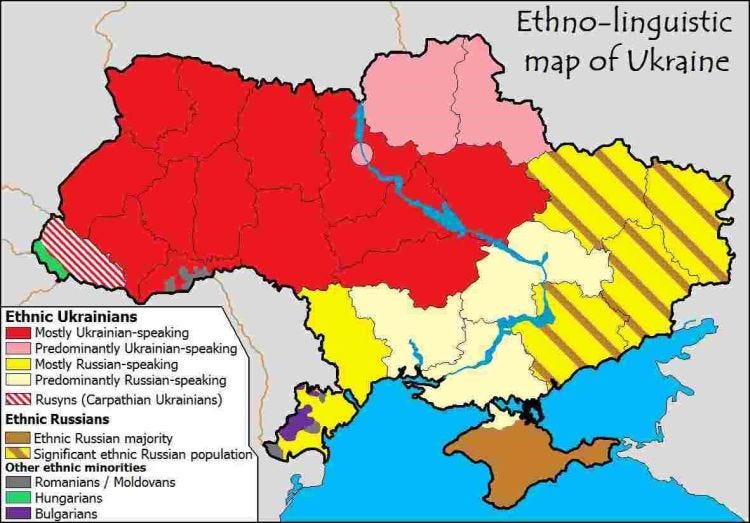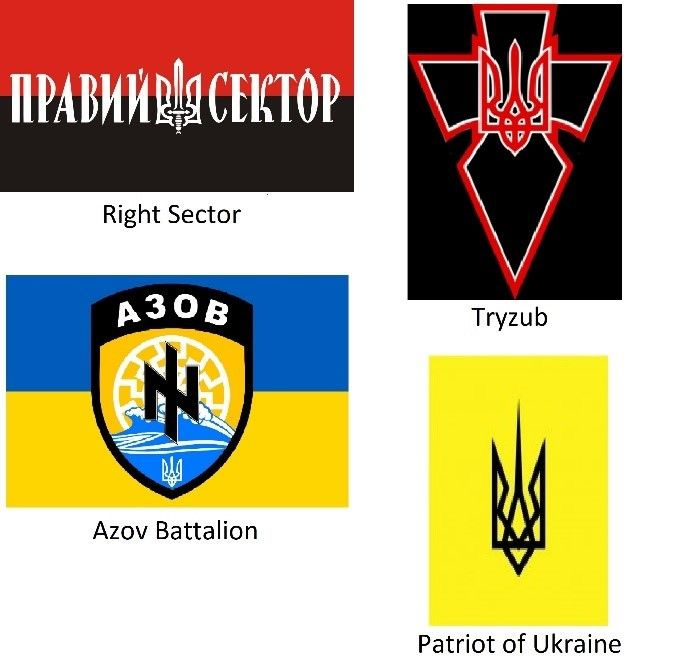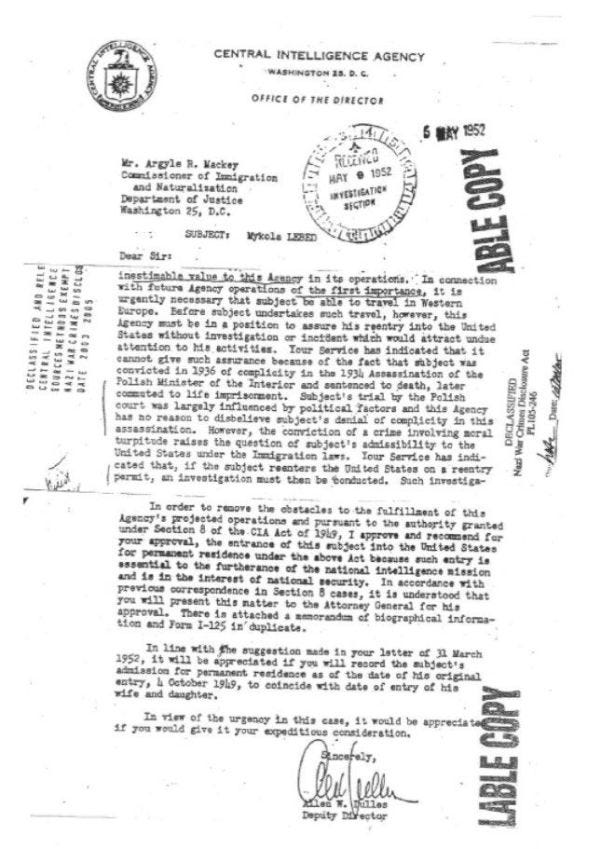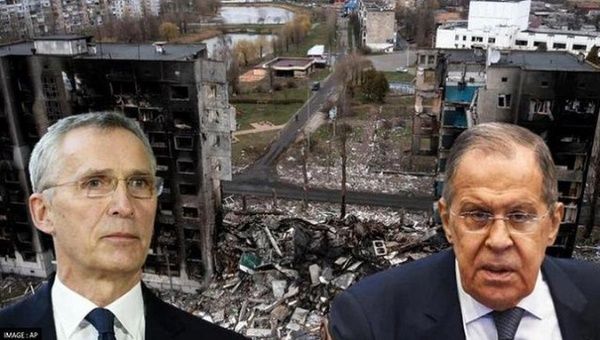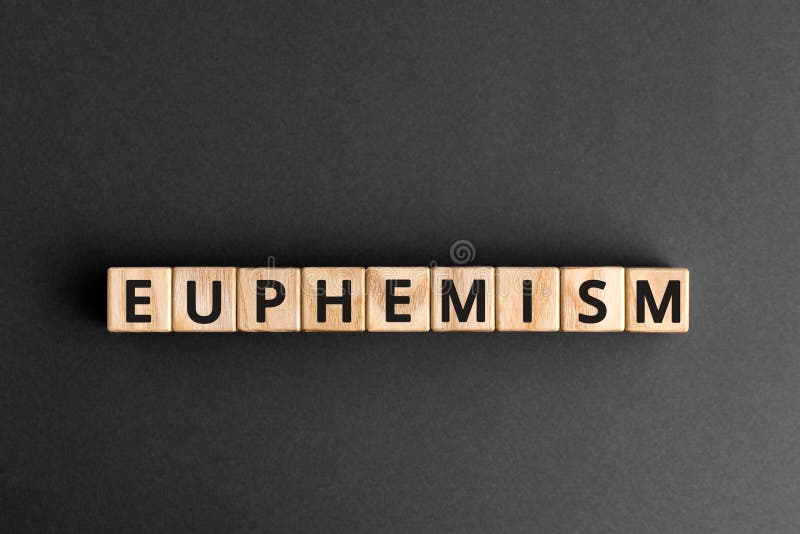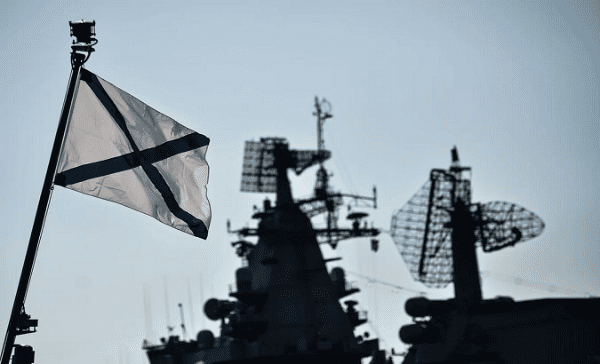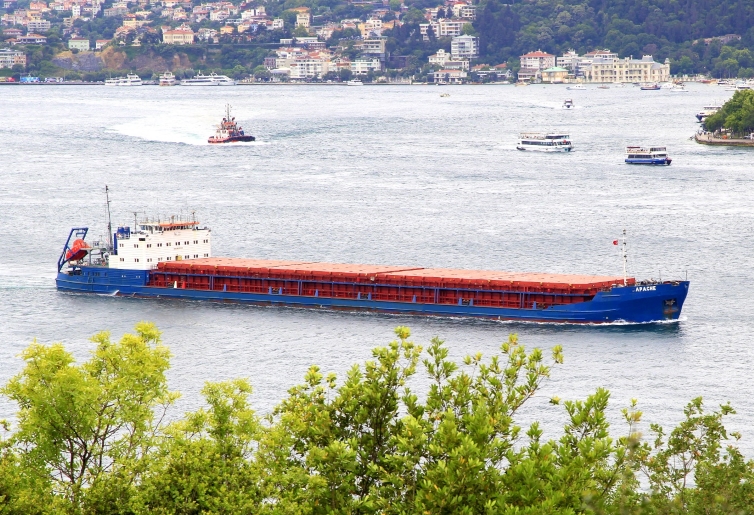Posted by INTERNATIONALIST 360° on APRIL 4, 2022
Christelle Néant
On 3 April 2022, Ukrainian authorities and Westerners accused Russia of committing a massacre of civilians in Bucha, a town on the outskirts of Kiev. But several inconsistencies indicate that the Bucha massacre is an episode worthy of the Timisoara mass grave case (a textbook case of disinformation).
To understand what really happened, we need to go back to the chronology of events.
On 30 March 2022, the Russian army withdrew from Bucha, as part of the redeployment of troops to the main theatre of operations, namely the Donbass. Alexander Kots, a journalist who was with the Russian troops in Bucha, even says that the Russian army had started to withdraw from this area already several days before, and that 30 March is just the date when the last soldiers left. The Ukrainian army did not immediately realize that the Russian army had left and continued shelling the area for several days, which may have caused civilian casualties.
On 31 March 2022, the mayor of Bucha, Anatoli Fedorouk, recorded a video in which he expressed his joy at the departure of the Russian armed forces from his town. At no point in the video does he mention the massacre of civilians. The mayor smiles broadly and speaks of victory, etc. Not a word about a possible massacre in Bucha, not a word about civilian casualties. Not a word about civilian casualties. Nothing. Which is strange, to say the least.
At the same time, the Telegram channel Bucha Live, which reports on Bucha, does not mention any massacre of civilians on 29, 30 or 31 March 2022. There is nothing on this channel before the public scandal broke. Rather strange for a channel that is supposed to be aware of what is happening locally.
Readovka
The “shooting” of civilians in Bucha for some reason went unnoticed by the large urban community and local residents – there were no reports of “mountains of corpses” that appeared only two days after the Russian Armed Forces left the city
This can be traced back to postings on the Telegram channel Bucha Live, which covers the situation in the city daily and in detail. If you look at the community’s posts on the dates of the alleged “shooting,” you can see that there are no reports of mountains of corpses lying in the streets.
It is logical to assume that the town community would have been among the first to report such a thing, and hiding so many bodies strewn about in a town of just under 30,000 people is simply impossible — the locals would surely have noticed it and reported it immediately.
If you go back to the April 3 articles, you can see Oleksiy Arestovych posing against the background of a wrecked BMD in Irpen (near Bucha) – the very day when the scandalous video with the bodies on the streets of the city appeared. At the same time, according to the statement of the Russian Defense Ministry, which is also confirmed by external data, Russian troops left Bucha as early as March 30.
All this confirms the thesis that Arestovich could have been the direct director of the viral video, especially if we compare this post with the fact that Zelensky’s office advisor had disappeared from the media space for two days before that, returning with the new rank of lieutenant colonel.
https://t.me/readovkanews/30021
On 1 April 2022, a video was posted on Twitter by an account belonging to a Ukrainian woman, who said she had received it from her brother. It clearly shows bodies lying in the street, but also at 8 seconds a fresh crater, probably left by a mortar shell, is clearly visible to the right of the road. Several bodies are only a few meters away from this crater, which seems to clearly indicate that these civilians died because of a recent shelling (and therefore a shelling by the Ukrainian army) and not because of a bullet in the head (they are not tied up unlike other bodies).
Another view of the street that i tweeted video about yesterday. https://t.co/VXsUEXaSin
— Viktoriia
On 2 April 2022, the Ukrainian police published a long video of their journey through Bucha, in which only one body can be seen in all the streets visited (at the beginning of the video – and from the state of the body, it is obvious that it was killed by a bombing.
This video is such a blot on the narrative that some in Ukraine are saying so publicly.
Even Ukrainian propagandists admit that everything did not go according to plan with Bucha. They wanted to make it look good, but the ogres lacked interaction. They revealed themselves.
https://t.me/epoddubny/9396
“Our source in the presidential office said that there is a big scandal in Bankova about the video of the national police, which was posted online on the instruction of Anton Guerashchenko on the clean-up of Bucha. It is this video, which shows strong discrepancies with the images of the murdered residents, which went viral yesterday, but which was made two days after the clean-up and was not included in the state police report, that is now raising questions. Mr Arestovich considers Mr Guerachthchenko’s actions a deliberate provocation, as the video raises many questions as to why there are no dead people in the streets and the mayor is only reporting on the clean-up operation,” the post reads.
On the same day, 2 April 2022, the head of Kiev’s territorial defense, Sergei Korotkikh, nicknamed Botsman (who fought in the neo-Nazi Azov regiment), publishes several videos of the work of ‘his guys’. In the second video of his post, at 6 seconds you can clearly hear one of the guys asking if he can shoot the “men who don’t have blue armbands” (Ukrainian army armbands). To which his commander (Botsman) replies positively.
BOATSMAN BOYS work in Bucha. In fact, there is nothing to do there anymore. Just mountains of burnt equipment and houses. Russians should watch this footage and see how they are destroying everything around them! And our cities and ourselves. We will definitely rebuild Bucha, but today this once cozy little town is a dump and ruin. Ruins of our houses, and a dump of Putin’s machinery and rotting bodies of orcs.
P.S. By the way, in Bucha we met a swarthy deputy from Servants of the People, the famous wrestler Jean Beleniuk. It was unexpected. Well, well done, he did not run away and does not hide. Though he could easily do it. Other deputies were not visible. #nasha_war
t.me/botsmanua
/16178
However, a number of bodies, including those in the famous “torture cellar”, wear white armbands, typical of civilians living in a Russian-controlled area (these armbands are used to indicate that they are not hostile), and echo those of the Russian army in Ukraine.
Now they are spreading this video in the Ukrainian segment, in which they claim that the Russians set up a torture chamber in one of the buildings in Bucha, where they shot people.
As I wrote in a previous post, locals (not all, but many) knitted white rags or ribbons on their sleeves when Russian troops were present, just in case. This was our identification sign – “our own, do not shoot”. For the Ukrainian military, accordingly, this sign meant “enemy.
And now pay attention to the screen, 22 seconds, on the body on the left is the same Russian identification sign. Once in Bucha, the terbatists grabbed people, dragged them into the basement, tortured them to get information, and shot them for “cooperating” with Russian troops.
And now they pass off the people they killed as victims of Russian aggression. And the world believes them. Pretends to believe them. Fantastic hoax!
@sashakots
t.me/sashakots
/30761
Moreover, if we look at Botsman’s Telegram channel, we can clearly see that the first photos of dead AND tied up people, date only from April 2, i.e. when Botsman and his men are already on the spot with the Ukrainian police to (and I quote there the Ukrainian media LB.ua, in an article of April 2, 2022) clean the city “from saboteurs and accomplices of the Russian forces” !!!
This is town of Bucha. As Russian army retreats, this is what remains: dead bodies of civilians, destruction and sorrow. And this was not done by Putin’s guardsmen, no. This is the grim work of „ordinary“ Russian soldiers. Thus modern Russia must be destroyed as a terrorist state before it causes more deaths and grief.
Russia delenda est
t.me/botsmanua
/16166
If you put this together with the question from Botsman’s team about being able to shoot men not wearing a blue armband, the scenario starts to become clearer.
Let’s highlight the other inconsistencies. On the numbers alone, no one agrees. Prosecutor General Venediktova announces 410 bodies, the mayor of Bucha told AFP by phone 280 bodies found in mass graves, AFP itself speaks of only 24 bodies seen, and Associated Press announces 20 dead in the streets.
If we look at the different bodies, four different locations emerge:
– Yablonskaya Street, where about 20 civilians were killed, presumably by Ukrainian army shelling on Bucha after the departure of Russian soldiers. They were left behind until 3 April 2022. A BBC report sheds light on this. At 16 seconds, the cameraman films a mortar shell embedded in the asphalt. Once geolocated, we realize that this shell comes from the south, i.e. from the place where the Ukrainian army was!
– The mass grave near St Andrei’s church. The trench was dug by the municipal authorities in consultation with Russian troops, to bury civilians who died during the exchange of fire between the Russian and Ukrainian armies. And this trench does not date from 30 or 31 March, but from mid-March, as this video from 13 March shows, where the bodies were decently buried. The video also clearly states that the people buried died as a result of the bombing. So there is nothing to do with civilians executed by the Russian army. According to the video, there are 67 bodies in this mass grave.
– There are nine bodies near, and in, a building that would have housed the Russian armed forces. One of the dead has his hands tied behind his back with tape and cling film (a typical Ukrainian method, visible in all the videos of people tied to poles before being beaten, which have been actively circulating on the internet for several weeks). One of the bodies also visibly shows a bullet wound in the knee, a method of torture used by the Ukrainians against captured Russian soldiers (which they themselves filmed).
The whole world must see this footage so they realize that this is not a war between Russia and Ukraine, which is supported by the NATO countries, but the war between good and evil.
In this video Ukrainian soldiers shoot Russian prisoners of war in the legs and afterwards give them a severe beating. At the beginning of the video, there are Russian POWs lying on the ground with bullet wounds in their legs, some of them have got leg bones broken. It might give the impression that the Russian military were captured after having been wounded. But that’s not the case. At the end of the video, we can see Ukrainian soldiers shooting all the newly arrived prisoners through their legs. Many of them are dying from shock due to the pain right on camera. And all of this is being filmed by Ukrainian soldiers themselves. They have been treating the captured Donbass defenders the same way throughout these eight years.
t.me/neoficialniybezsonov
/9922
– Photos of dead civilians on the Zhitomir highway. This is in fact the same place where a video was filmed on 7 March showing a shoot-out involving members of the so-called territorial defense battalions.
Finally, to complete the picture, in an interview given to the media outlet Meduza (classified as a foreign agent in Russia), a woman living in Bucha and a member of the territorial defense (so not a pro-Russian), says herself that “the people lying on Yablonskaya died because of chaotic shooting”, and she does not report any cases of Russian soldiers shooting civilians during the time they controlled the city. Rather odd.
If we now take all this information, and analyse what emerges from it all, the scenario that emerges is this:
– On 30 March 2022 the Russian army withdrew its last soldiers from Bucha. But the Ukrainian army did not immediately realize this and continued to fire on the town for several days, including on Yablonskaya Street where there was a building occupied by Russian troops.
– On 31 March 2022 the mayor of Bucha made a video to celebrate the liberation of the city, and made no mention of civilians being massacred by Russian troops or bodies being seen in the streets.
– On 1 April 2022, the bodies on Yablonskaya Street are filmed from a car and the video is published late at night on Twitter. This means that these people certainly died on 31 March (after the time of the mayor’s video) or on 1 April (before the time of the video showing the bodies).
– On 2 April 2022, the Ukrainian police filmed the streets of Bucha and only one body obviously killed by a bombardment appears at the beginning of the video. There is no mention of a massacre, or even of the deaths on Yablonskaya Street. Yet the information is known since a video has been circulating since the day before. My hypothesis is that the Ukrainian police did not want to show the bodies because these civilians were killed by Ukrainian army bombing and not by Russian troops. The police would therefore have tried to avoid highlighting this crime of the Ukrainian army against its own population. It seems that the Ukrainian police did not have the idea of exploiting these deaths to blame Russia. This has earned them a reprimand.
– Also on 2 April 2022, Botsman’s team of Ukrainian fighters arrived in Bucha with the Ukrainian police to flush out possible saboteurs or accomplices of the Russian troops. Botsman’s troops were given permission to shoot at men not wearing a blue armband. The Ukrainian troops then reportedly captured, tortured and killed several civilians whom they considered to have collaborated with the Russians. It was at this point that photos appeared of civilians being tortured and killed with their hands tied behind their backs, whose deaths were attributed to the Russians. The same goes for the civilians who were buried in the mass grave near the church in mid-March, even though they died during the bombing and were not executed by Russian soldiers at all.
If we add up the 67 civilians buried in the mass grave, the 20 bodies in Yablonskaya Street, and the nine near and in the building where the Russian soldiers were stationed, we are a long way from the 410 bodies announced by the Ukrainian authorities. Civilians have died in Bucha, but most of them died during the shelling of the city, including shelling by the Ukrainian army, and nine were clearly tortured and murdered by Ukrainian troops for collaborating with Russian troops.
As can be seen, the Bucha massacre case bears a striking resemblance to the Timisoara massacre, but with a Ukrainian twist. It is clear that an impartial and rapid international investigation into what happened in Bucha is needed. But it seems that this is not on the agenda, with the West refusing Russia’s request for an urgent meeting of the UN Security Council on what happened in Bucha.
https://libya360.wordpress.com/2022/04/ ... timisoara/
(Other video at link.)
*************************************
Meeting with the consequences of the Minsk agreements
April 5, 22:43

Meeting with the consequences of the Minsk agreements
I have said more than once that Kyiv did not spend all these years of relative silence in vain: dozens of military training grounds for training soldiers (each one was staffed by Western instructors), rearmament, and, most importantly and terrible, a change in ideology in the minds of people and the military.
In 2015, Poroshenko issued a decree on the "disbandment of illegal armed groups on the territory of Ukraine." And all this scum from illegal bandit formations joined the ranks of the Armed Forces of Ukraine and the NSU. The legalized Nazis in the army stood out significantly: they had much better support and all sorts of privileges. Plus, the nationalists took on the work of someone like political instructors under the USSR, that is, they carried their ideology to the army and not only.
Work with the civilian population of Ukraine was set up for the top five. Already from kindergarten, and then in schools, for all eight years, young people were taught that Russia was an enemy and an aggressor, a rewritten history in which outright fascists Shukhevych and Bandera became heroes of Ukraine. And they were told this by the heroized Nazis, whom we released from the boilers at the beginning of the war.
What did we end up with? Those who were 12 years old in 2014 are now 20-year-old guys, and they serve in the Armed Forces of Ukraine and NSU, these young people have been brainwashed all these years. Today, unfortunately, in essence, the national battalions and regular units do not differ from each other. Therefore, the resistance is serious.
But I am sure that after the end of the special operation, with the discovery of real information about what happened in Ukraine, many of these young people will see clearly, but those who do not will be dangerous people for society, and they will have to be worked hard and fast.
The main thing is that we are not stopped and that we again do not give them a respite for years.
(с) Andrey Rudenko
https://telegra.ph/Reportyor-VGTRK-Andr ... etsk-04-05 - zinc
What could be worse than Minsk-1 and Minsk-2? Minsk-3. Even if it takes place in another city.
https://colonelcassad.livejournal.com/7541610.html
***********************************
LIVE: US Orders $100 Million in Military Aid for Ukraine

U.S. Marines with the Black Sea Rotational Force fire an FGM-148 Javelin at Babadag Training Area, Romania. | Photo: U.S. Marine Corps
Published 5 April 2022
U.Ss President Joe Biden has ordered to allocate an additional $100m in military aid to Ukraine, the White House has reported.
Moscow and Kyiv have conducted several rounds of peace talks with the aim of searching for a political settlement to the ongoing crisis in Ukraine. The outcomes of these talks are expected to lay an important foundation for de-escalation of tensions, but key divergences have yet to be resolved. Below are the main developments of this conflict as they happen.
New $100 million U.S. military assistance to Ukraine to include Javelin systems
US President Joe Biden tasked his administration with allocating additional military aid to Kiev worth up to $100 million, including anti-tank weapons, the White House press service and US Secretary of State Antony Blinken said.
"I hereby delegate to the Secretary of State <…> to direct the drawdown of up to an aggregate value of $100 million in defense articles and services of the Department of Defense, and military education and training, to provide assistance to Ukraine," the White House quoted Biden’s memorandum to the US secretary of state.
Blinken said in a statement he had authorized the aid "to meet Ukraine’s urgent need for additional anti-armor systems."
Russia can theoretically be excluded from UN HRC, but not from Security Council - envoy
Excluding Russia from the UN Human Rights Council (HRC) is theoretically possible, but the country cannot be deprived of its permanent seat in the UN Security Council, Russian Permanent Representative to the UN Vasily Nebenzya told Channel One on Tuesday.
"Talks that someone may exclude us from the UN Security Council are not backed by anything. However, nothing can be ruled out at this point, because we are living in a world where all rules have become totally irrelevant," he said.
‘The US envoy [to the UN, Linda Thomas-Greenfield,] said today that the United States would seek to exclude Russia from the Human Rights Council. Well, this can be done in theory, but under no circumstances can they exclude us from the Security Council," the Russian diplomat added.
Russia seeks peace in Donbass, not Ukrainian lands - diplomat
Vasily Nebenzya
Russia’s goal in Ukraine is to achieve peace in the war-torn Donbass region, not seize Ukrainian lands, Russian Permanent Representative to the UN Vasily Nebenzya told the UN Security Council on Tuesday.
"I just want you to give it a thought and really hope that you will find a solution to this situation, because it depends only on you," the Russian envoy said, addressing Ukrainian President Vladimir Zelensky, who earlier delivered a speech before the UN Security Council. "We didn’t come to you for Ukrainian land. We came to bring a long-awaited peace to a bleeding Donbas. Not a truce, but a genuine lasting peace."
"To do so, it is necessary to root out the cruelty that I mentioned and remove that Nazi malignant tumor that is devouring Ukraine and would have eventually begun to devour Russia," the Russian diplomat added.
Romania expels 10 Russian embassy employees - MFA
Romania is expelling 10 employees of the Russian embassy in Bucharest, the Romanian Foreign Ministry said in a statement published on its website on Tuesday.
"The Romanian government decided to declare 10 people working in the Russian Embassy in Bucharest as personae non gratae on Romanian territory, believing that their activities run contrary to the provisions of the Vienna Convention on Diplomatic Relations of 1961," the statement said.
Russian Ambassador to Romania Valery Kuzmin told TASS the embassy employees were given five days to leave the country. He called the decision an "unfriendly step" and assured Russia will retaliate.
Russia ready to work honestly at negotiating table with Ukraine - Lavrov
Russia is ready to work at the negotiating table with Ukraine honestly and consistently, Russian Foreign Minister Sergey Lavrov said on Tuesday.
"We insist that the international community must know the truth. And the international community should know that the Russia side is ready to work honestly and consistently at the negotiating table," he said.
"If the Ukrainian delegation continues to say that some extra steps from Russia are needed, if it continues to categorically refuse, as it is doing now, to even discuss denazification and demilitarization, the restoration of the rights of the Russian language, if they continue to say that they have no problems with the Russian language, with the rights of the Russian-speaking population, and with Nazification of all spheres of the country’s life, I don’t think it will promote further progress of the negotiating process," he stressed.
Russia announces final offensive on Mariupol. On Tuesday afternoon, the Russian Army announced the launch of its final offensive to take Mariupol. This announcement came after the deadline for the Ukrainian forces to lay down their arms and leave this port city located on the Sea of Azov.
"Taking into consideration Kyiv's lack of interest in preserving the lives of its military, Mariupol will be liberated from nationalist units," Russian Defense Ministry spokesman Gen. Igor Konashenkov said, adding that the Russian Army frustrated a new attempt to evacuate the command of the nationalist Azov battalion by shooting down two Mi-8 helicopters that were trying to reach the city from the sea.
Konashenkov reported that the Lugansk forces continued their advance against the positions of the Ukrainian 24th Motorized Brigade. They also managed to break through the defense lines of the Ukrainian 57th Motorized Infantry Brigade, which lost up to 50 troops and 9 armored vehicles.
For several weeks, Mariupol, a city where some 100,000 people still remain, has been under siege by Russian troops and separatist militias. At the end of March, Russia withdrew from the Kyiv region and regrouped its forces to focus all its efforts on the liberation of Donbas.
Ukraine and its allies try to sabotage the negotiations by claiming a massacre in Bucha. On Tuesday, Russian Foreign Minister Sergey Lavrov warned that the West is trying to sabotage negotiations, attributing responsibility for the murders in Bucha to his country.
"Moscow has twice requested an urgent session of the United Nations Security Council on the Bucha situation, but the United Kingdom (which is at present presiding over the UNSC) refused both times to hold the meeting," outlet Spunik recalled.
Latvia closed two Russian consular posts and declared their staff personae non grata. Latvia's Foreign Ministry said that Russia's Consulates in Daugavpils and Liepaja were being closed "in solidarity with Ukraine." Mikhail Vanin, the Russian Federation's ambassador to Latvia, was notified of the decision.
Italy and Romania expel 40 Russian diplomats. Italy's foreign ministry announced the expulsion of 30 Russian diplomats for what it called "reasons related to national security." Also on Tuesday, Romania decided to expel ten Russian diplomats.
"The Romanian authorities have decided to declare as personae non grata on the territory of Romania ten people working in the Embassy of the Russian Federation in Bucharest, given that their activities and actions are contrary to the provisions of the Vienna Convention," the country's foreign ministry said.
Ukraine is the third largest importer of German arms. In the first three months of 2022, German authorities granted arms export licenses worth 2.8 billion euros. In the similar period of 2021, however, that figure only reached 981 million euros.
"The increase can be largely explained by a high-volume acquisition project from the Netherlands, which will last several years and which alone represents 62 percent of the total approval value in the first quarter," the Economy ministry said.
The main destinations of German weapons during the first quarter of 2022 were the Netherlands (1.7 billion euros), the U.K. (215 million euros), and Ukraine (186 million euros). "Germany strongly supports Ukraine in its right to self-defense, as evidenced by the current values of weapons permits," State Secretary Sven Giegold said.
Russia denounces staged video of dead Ukrainian civilians. On Tuesday, Russian Defense Ministry spokesman Igor Konashenkov denounced that the Ukrainian military made and released a new staged video in which civilians are allegedly killed by the Russian forces.
The video intended to incriminate the Russians was actually made by the Ukrainian military of the 72 Information and Psychological Operations Center in the Moschun region. This recording was later released by Western media. "Similar activities are now being organized by Ukrainian special services in cities like Sumy and Konotop," he added.
The French Justice opens investigations over possible war crimes in Ukraine. On Tuesday, the French National Antiterrorist Prosecutor's Office (PNAT) opened four investigations over possible war crimes committed in Ukraine against French victims, without currently identifying the alleged perpetrators, although some elements point to Russian forces.
The PNAT indicated that three of these investigations "against X" have been formally launched for events that occurred in the cities of Mariupol (between February 25 and March 16), Gostomel (between March 1 and 12), and Chernihiv (since February 24).
The qualification of war crimes is justified because they are voluntary acts against the physical integrity of people; deliberate attacks against civilians who were not involved in acts of war; of the deprivation of essential goods for the survival of civilians; and/or for deliberate attacks on civilian objects, their theft or their destruction.
The investigations have been entrusted to the police of the Central Office for the Fight against Crimes against Humanity and Hate Crimes (OCLCH). On March 16, the PNAT had already launched another investigation for war crimes following the death two days earlier of French-Irish television cameraman Pierre Zakrzewski, who was part of a team from Fox News that was shot north from Kyiv.
French justice can declare jurisdiction over war crimes committed abroad when there are victims of French nationality or residents in France, but also when the alleged perpetrators are French.
Denmark Expels 15 Russian Diplomats. On Tuesday, Danish Foreign Minister Jeppe Kofod announced the expulsion of 15 Russian diplomatic staff members, accusing them as "intelligence officers" for espionage.
Russian Ambassador to Denmark Vladimir Barbin had been earlier informed of the expulsion of the "intelligence officers working at the Russian embassy in Copenhagen." The expelled officers have 14 days to depart Denmark.
The Russian embassy in Denmark denies the accusations, claiming that the Danish move aims to further deteriorate relations between the two countries. "It will not remain unanswered," wrote the Russian embassy in an email to the Danish news agency Ritzau.
In response, Russian foreign ministry spokeswoman Maria Zakharova said that Moscow will take retaliatory measures against Denmark over the expulsion of Russian diplomats.
Russia hopes Kiev won't listen to "advisers" from afar. Moscow hopes Kiev will follow its national interests at Russia-Ukraine peace talks, but not listen to "advisers" from afar, Russian Foreign Minister Sergei Lavrov said.
"It is not the talks that influence the course of the operation, but external 'players' who are trying to hinder these negotiations and keep the clashes 'on the ground' going on for as long as possible," he told a press conference following talks with Arab League (AL) representatives on Ukraine.
"We know who gives such 'advice' to our Ukrainian neighbors. This is done with useless goals that have nothing to do with the interests of the Ukrainian people, the security of Ukraine, the security in the region of the Organization for Security and Cooperation in Europe, and in our European region," he added.
"I hope that those who lead the delegation of Kiev at the said talks will start to be guided by their own national interests, the interests of their people but not listen to 'advisers' from afar, who sometimes only want to see how the crisis situation will continue to build up," Lavrov said.
He added that Russia will debunk fakes related to the special operation in Ukraine. The minister also expressed the readiness to cooperate and continue to inform colleagues in the AL about the development of the situation, according to the statement.
The Arab Ministerial delegation, headed by Ahmed Aboul-Gheit, secretary-general of the AL, visited Russia to seek a diplomatic solution for the Russia-Ukraine conflict. The group, including representatives from Egypt, Jordan, Algeria, Iraq, Sudan, and the United Arab Emirates, will travel to Warsaw on Tuesday for another meeting with Ukrainian Foreign Minister Dmytro Kuleba.
https://www.telesurenglish.net/news/LIV ... -0001.html
Putin and Zelensky Meeting Possible Upon Peace Treaty Readiness

Russia said it is necessary to have a written agreement between Russia-Ukraine. April. 5, 2022. | Photo: Twitter/@DailyWorld24
Published 5 April 2022 (8 hours 37 minutes ago)
On Tuesday, Kremlin press secretary Dmitry Peskov said that a meeting between Russian President Vladimir Putin and Ukrainian President Volodymyr Zelensky is possible only after a written agreement advocating peace is worked out between both nations.
Russian President Vladimir Putin has never ruled out such a meeting. Still, for making it real, a written document must be generated by the two delegations, the top official said.
Peskov said at a daily briefing session: "Nothing has changed for us. We do not reject the possibility of such a meeting for our president."
The Russian press secretary said that such a meeting is possible only after the document's text is agreed upon.
Moscow and Kiev have conducted several rounds of negotiations to finalize a treaty to end the ongoing crisis in Ukraine.
Russian President Vladimir Putin launched a special military operation in Ukraine late in February following Kiev failure to meet with the Minsk Agreements and the eventual recognition by Russia of the sovereignty of the Donetsk and Lugansk Peoples Republics. Russia's special military operation responded to a request for help from the Donetsk and Lugansk republics leaders.
Russia has been facing the imposition of many illegal sanctions by the West and its allies worldwide, who have been looking to punish Moscow for its move to Ukraine.
https://www.telesurenglish.net/news/Put ... -0019.html
I suspect Zelensky is just killing time and Ukrainians at the behest of his US masters and Nazi minders.
West Uses Bucha Situation to Disrupt Russia-Ukraine Talks

Russia Says Bucha claims aim to slander the country. April. 4, 2022. | Photo: Twitter/@frediejustine
Published 5 April 2022 (12 hours 28 minutes ago)
Russian Foreign Minister Sergei Lavrov said Tuesday that the West is feeding Bucha's provocation hype to disrupt Russia-Ukraine negotiations.
Kiev and western media blamed Russia for the killing of civilians in the Ukrainian city of Bucha. Russia has said that Ukraine and Western media have created such a situation, noting that it is another provocation that only damages the ongoing Russia-Ukraine talks.
The Russian foreign minister said that Bucha's provocation came right after Kiev put forward possible peace proposals such as those on Crimea. He added that Western attempts to provoke Russia pose a high risk that the negotiations will fail, just like the Minsk agreements.
Referring to the talks between the two sides held in Istanbul, Turkey, in late March, Lavrov said they were productive, as crucial deals were suggested for the much-desired peace. The senior official said that then Ukraine confirmed the necessity of ensuring the country's non-nuclear and non-bloc status and its assurance that the country will not become a member of the U.S.-led NATO alliance and Ukraine's recognition of Crimea and Donbass as finally resolved issues.
The minister said that Kiev must abstain from spoiling the process under any circumstances to achieve real progress in the negotiations. Lavrov also said Russia is concerned about Kiev's decision to demand the ratification of a possible peace agreement and a referendum, saying this could slow down the process.
Lavrov made these statements in light of claims by Western media and Ukrainian media, who keep stirring up the narrative that Russia is responsible for the mass killings of civilians in the city of Bucha, despite the lack of evidence to prove these allegations.
Western and Ukrainian media have used footage showing dead bodies lying on the city's streets to support their claims. However, the images have sparked controversy, with many observers claiming that the alleged corpses moved or even stood up once the camera passed in front of them.
Russia said that the situation in Bucha is another provocation aimed at defaming Moscow, which has already called for an urgent session of the United Nations Security Council (UNSC) on the situation in Bucha twice; however, Russia's request has been rejected both times.
https://www.telesurenglish.net/news/Wes ... -0011.html
Alleged Attack on Ukrainian Chemical Plant by Ukraine Forces

Explosion in the Zarya chemical plant in Ukraine. Apr. 5, 2022. | Photo: Twitter/@dimpenewscom1
Published 5 April 2022 (13 hours 16 minutes ago)
Reportedly Ukrainian forces have blown up a tank that is supposed to contain hydrochloric acid while retreating.
Ukrainian forces have allegedly blown up a tank that contained hydrochloric acid during their retreat from a chemical plant in the town of Rubezhnoe in the Lugansk People's Republic, resulting in a flashpoint in the ongoing military conflict.
According to the LPR's militia, the tank exploded in a populated area controlled by local fighters. "[These] terrorist actions might lead to mass civilian casualties," LPR's forces adverted via Telegram. The authorities are carrying out investigations to collect information about any possible casualties resulting from the incident.
LPR's authorities have accused Ukrainian media of "actively spreading fakes" about Donbass fighters having allegedly blown up the tank. The self-proclaimed people's republics have said that intending to cover the "criminal terrorist actions" performed Kiev military forces; they have been doing this.
On Tuesday, Sergei Gaidai, Kiev governor to Lugansk, said via Telegram that a projectile from Russian troops had struck a nitric acid tank in the area. He urged people in the region to stay indoors and close all doors and windows and prepare wet face masks. "Nitric acid is dangerous if inhaled or swallowed," warned Gaidai.
Once one of Ukraine's leading chemical enterprises, the' Zarya' chemical plant suffered Tuesday the explosion of one of its tanks, which allegedly contained hydrochloric acid. The videos that emerged after the attack show thick, orange-tinged smoke billowing over the area with some residential buildings.
The Ukrainian chemical plant has some installations to store sulfuric and hydrochloric acid. Once in contact with the atmosphere, that acid might cause a toxic fog affecting people's eyes and airways. If mixed with various oxidizers like potassium permanganate, it releases highly toxic chlorine gas.
https://www.telesurenglish.net/news/All ... -0010.html
***************************************************
Press Briefing by Amb.Nebenzia on the Situation in the Town of Bucha and Related Matters
Posted by INTERNATIONALIST 360° on APRIL 4, 2022
Press Briefing by Permanent Representative Vassily Nebenzia on the situation in the town of Bucha (Kiev Region) and related matters
Vassily Nebenzia: These are unprecedented times, as you know. What is also unprecedented is what happened yesterday and earlier today. It was unprecedented, unbelievable, and unthinkable. We were denied a Security Council meeting that we requested today from the British Presidency. During my time here, I had emergency meetings of the Security Council on many issues that happened on weekends, on US holidays, etc, and we never objected. What happened is something unbelievable and unprecedented in the history of the United Nations. That is a fact.
I heard today’s press conference by Ambassador Barbara Woodward. I heard questions that she was asked, and I heard answers that she gave. Frankly, some of the answers she was just not able to give. Before we have a meeting tomorrow, I would like to tell you of a few things which it is very important to get through to you – press and media. It is about what has happened recently and is happening now around Kiev.
On April 4 the Kiev regime with an active support from its Western sponsors started to promote in Western mass media fake news about alleged “atrocities” of the Russian military forces in the town of Bucha (a suburb of Kiev) in Ukraine.
From the very beginning it has been clear that this is nothing else but yet another staged provocation aimed at discrediting and dehumanizing of the Russian military and levelling political pressure on Russia. Not many of you know about the Russian military, but I assure you that Russian military is nothing that it is being accused of, in particular what regards “cruel atrocities” against civil population. It is not the case. It never was, and will never be.
We have factual evidence that proves this point. We intended to present it to the Security Council as soon as possible so that the international community is not misled by the false narrative promoted by Kiev and its Western sponsors.
To this end, the Russian Federation requested a Security Council meeting to be convened at 3 pm New York Time today on April 4 to discuss this heinous provocation by the Kiev regime.
I would like to emphasize that we did it as early as on 2.51 pm on Sunday, full 24 hours before the requested meeting, so the UK claims that we asked for a meeting “too late” are misinformation.
Our efforts have been met with the fierce opposition of the UK Presidency with the support of other Western delegations, namely the US, France, Ireland, Norway and Albania.
They tried to invent an invalid and lame pretext not to convene this meeting on Monday insisting that it should be postponed to Tuesday.
The UK Ambassador keeps claiming, and you could hear that at her press conference earlier today, that they wanted to have a more “informed” meeting with the UN Secretariat as a briefer. This is a lie. We have never objected to having a briefer on Monday, and it is the obligation of the Presidency to arrange for that. We did not request a briefer from our side. During the Russian Presidency, we duly arranged for such meetings at the request of the Western delegations, in the middle of the day or night, regardless of the complex geopolitical context and constant provocations vis-à-vis our country.
I would like to stress: the UK Presidency openly rejected our request to convene a meeting on April 4. And they did it twice. Since the situation around Bucha kept evolving overnight, today we requested an urgent Council meeting at 3 pm.
However, the Presidency took the liberty to qualify that there is no reason to convey an emergency meeting. As they put it, the UK does not believe that the situation in Bucha is calling for immediate attention of the Security Council.
This is a unilateral assertion of the UK Presidency, not a decision of the Council members. You can see clearly now what a “rules-based order” promoted by the UK and other Western countries means in real life. It means them imposing rules that are comfortable to them with total disregard for the international law and the established UNSC rules of procedure.
This behavior is very illustrative and reveals true attitude of the West to the Ukrainian people. While blocking the discussion on Bucha, where we see a clear-cut provocation in classical Goebbels’s style, risking to have serious implications for the international peace and security, the Western delegations rushed to convene a Security Council meeting on the education for girls in Afghanistan some time ago. You can see what their real priorities are.
The reason why the Western delegations do this is very simple. It would not benefit Western cause if the Security Council meeting was convened by Russia, because this would shake the anti-Russian narrative that they are comfortably promoting. The Western delegations prefer to “blend in” the situation in Bucha with the discussion of the humanitarian situation at the meeting they convene tomorrow, to shift the focus away from the staged provocation by the Kiev regime. To this end, the UK by its own discretion added our agenda item to tomorrow’s briefing. We have never approved that. It is yet another illustration of their behavior.
I would like to recall Rule 2 of the Provisional rules of Procedure of the Security Council. It is explicit that the Presidency should call for a meeting at the request of any member of the Security Council.
What we see now is a shameful and unprecedented abuse by the UK of the President’s prerogatives. At the same time, this is a demonstration of weakness showing that the Western delegations had to resort to this maneuvering to shut Russia’s voice. It only proves the point that Western delegations care neither about the real situation in Bucha, nor about the Council authority.
Abusive, condescendent, colonialistic line of the UK Presidency is undermining the very foundations of the UN, and we will yet have to assess the implications.
The Presidency is entrusted by the Charter to lead the Security Council. The UK failed to lead. It is a disgrace for the British diplomacy and an undeniable stain on its reputation.
Given negligence of the UK Presidency, we decided to convene this press conference to shed light on the Western-backed provocation of the Kiev regime in Bucha.
I would like to present to you the real facts about Bucha.
During the time that the town has been under the control of the Russian armed forces, not a single local resident has suffered from any violent action.
For as long as the town was under the control of the Russian armed forces locals were moving freely around the town and using cellular phones. So they could post on social media any photo and video footage of any theoretical “harassment” if this were the case. However, that did not happen.
Let me address the developments in chronological order.
On March 30, following another round of talks in Ankara, Russian Ministry of Defense announced the withdrawal of forces from a number of regions, including Bucha.
That fact was confirmed the next day by the mayor of Bucha. In his video of March 31 Anatoly Fedoruk presented the withdrawal of Russian forces as a victory of Ukrainian Army. Interestingly, he had not mentioned any mass atrocities, dead bodies, killings, graves or anything like that. It is hard to imagine that a city mayor can “forget” to address such a devastating scenario.
Let me show you the video posted by Mr. Fedoruk. As you will see, he looks happy and smiling. It is hard to imagine that he is acting like this against the backdrop of “massacre” in the streets. That’s in Ukrainian, but as I said, he is very happy that Russian troops withdrew, which he regards as a great victory of the Ukrainian army. He makes no mentioning of any atrocities in the city.
This video was posted on “Ukraine 24” channel on the 1st of April. I would like to stress – nothing about “atrocities” was revealed on April 1st.
Let me also show a photo of Zhan Belenyuk, a deputy of the Ukrainian parliament, who, according to his reports in social media, visited Bucha after regaining control by the Ukrainian government. As you can see, he is also smiling. He is joyful. In his reports he mentions no dead bodies. Not a single reference to “atrocities”.
On April 2nd the National Guard of Ukraine posted on official resources a video from Bucha. Let me show you the footage. The video captures members of Ukrainian armed forces entering Bucha. The footage shows no dead bodies in the streets. The Ukrainian military interviewed several people in different locations across the town. None of them said a word about any “massacre” or mass killings. Camera also captures background behind these people, with no dead bodies in sight.
To sum it up, there are no reports of atrocities which are accredited to the Russian military in Bucha, which happened before the Ukrainian army took control of the town. Four days after the Russian military left the city of Bucha there was not a single sign of any “atrocities”. I repeat – not a single reference to it, anywhere.
The infamous video depicting bodies on the city roads only appeared on April 3rd. It is full of discrepancies and blatant lies. According to its authors, the bodies were lying on the streets for at least 4 days by the time the video was filmed. However, the bodies are not stiffened. How is that possible? It is against the law of biology. The bodies do not have signs of decomposition known to forensic experts, including cadaver stains. The wounds contain no blood.
Another point illustrating that this video is fake.
The Ukrainian forces use either blue or yellow armlets or stripes. Because members of Ukrainian militia do not always wear military uniforms, local civilians in Bucha wore white stripes on their upper arms when the Russian forces were stationed in Bucha. That was done to prevent misidentification of civilians from members of militia. When the Ukrainian forces entered the town, they fired at the people with white stripes, killing the civilians. There is a video showing a conversation between members of Ukrainian units. It was published in social media by the so-called “territorial defense” – a radical nationalist fighting group. One of the radicals asks if he can shoot at the people without blue stripes. The other confirms that this is permissible.
Russian speakers know that, but let me translate for the rest of you:
Question behind the scene – «There are folks without blue bands, can I shoot them?»
Answer: «Of course».
I hope the evidence we demonstrated today leaves you with no illusion that the video circulated by the Kiev regime is a crude forgery. It does not stand any scrutiny. However, some Western leaders, for example German Federal Chancellor Olaf Scholz, French President Emmanuel Macron, and of course British Foreign Minister Liz Truss have already lined up to promote this false narrative.
What happened in Bucha is exactly a false flag attack by the Kiev regime and its Western sponsors. The possible goal of this provocation is horrifying and brings back the nightmares of the Nazi crimes during the Second World War.
Vladimir Zelensky, once he arrived in Bucha, hinted that this “incident” justifies any “uncivilized response”. By this basically he confirmed that the Kiev regime considers genocide as a method of warfare. Now the nationalists have a pretext to commit a real massacre of innocent Ukrainian people executing them as “traitors”. We want the world to stay alert and we call on the Council not to let these horrific cleansing to happen.
To conclude I would like to reiterate that the Russian military forces act in strict compliance with international humanitarian law and do not target civilians and civilian objects. If we were pursuing aggressive goals, like those of the US-led coalition in Iraq, the scale of losses and devastation would be worse by digits. Like in Raqqa and Mosul that were bombed by the US to ashes, killing thousands of civilians, including women and children, whose bodies were left unburied for weeks and even months.
You will hear more from me tomorrow, because more information is coming. I think that the truth about what happened in Bucha will reveal itself very soon.
Q: A Security Council meeting did not take place because Great Britain said no. The United States intends to pursue Russia’s suspension from the UN Human Rights Council. Do you think these actions can undermine the negotiations efforts for a humanitarian ceasefire? What are the next steps you are planning here at the UN?
A: Of course, Human Rights Council is not our piece of cake, so to say. We are in another format. But I think that this is again unbelievable what the West and the rest are trying to do with Russia today, trying to exclude it from whatever multilateral forums we have in the world.
So in response to what you are saying, I think yes they can. This is, again, unprecedented. And this will not facilitate, encourage or be helpful for what is happening at Russian-Ukrainian peace talks.
Q: On the other side, the Ukrainians have presented footage of people who have said that their loved ones have been killed by Russian troops – civilians not doing anything. As for the footage that’s been shown. We’ve seen a little bit that you’ve shown, but do you consider that the statements of these women and family members who’ve watched their own loved ones being killed by Russian troops are fake?
A: This is a warfare. And in warfare, anything happens. You cannot exclude that civilians may die. That is a sad fact of life. But the footage that we are being presented with, in particular in Bucha, of which I spoke, does not give us any doubt that it was staged. We will present more evidence on that tomorrow when we speak in the Security Council.
Q: I’d like to ask you one follow-up question. Ukrainian Prosecutor General Irina Venedictova today told Ukrainian television that the situation in a town called Borodyanka may be worse than Bucha in terms of people who have been found killed. That town was also occupied by Russian forces until recently. Do you know anything about that?
A: Frankly, no. I just hear from you as you speak.
Q: My question is about Bucha. There are pictures. There’s eyewitness evidence. What are you saying about how this happened? And you did show us pictures of two pregnant women who were fake photos, and we saw one of them give birth and we saw the other one die. Do you believe that the pictures and the story you’re getting right now and telling us are true about Bucha?
A: I just saw a footage today on the Russian television of the lady that gave birth in Mariupol. She admitted that it had been a fake. She’s an Ukrainian blogger named Mariana. She admitted that it was a fake, that she was made to make that footage.
Now, to what you see in the streets of Bucha. The corpses had never existed before the departure of Russian troops, and then suddenly appeared in the streets, lying on the road one by one, right and left. If you look carefully, you will see that some of them are moving. Some of them are showing signs of life. You cannot escape from an understanding that this is staged, that it is a fake and a provocation. Because, as you all know, besides the warfare, we have a raging information war. And we have evidence that it was premeditated and arranged by the Ukrainian information warfare machine.
Q: Therefore, you’re blaming the Ukrainians for actually putting these bodies there?
A: One thing you cannot deny is that Ukrainians are using people as a human shield when they hide behind them in residential buildings, which they use to call fire on themselves.
Q: The second woman who was pregnant, by the way, did die.
A: If that is the case, I’m sorry for her. I really am. You may believe me.
Q: But part of the question is then the bigger picture. Martin Griffith just came from Moscow. Is there any possibility of a ceasefire?
A: And the question is, from which hands she died. They claimed that it was a Russian airstrike, while the evidence shows that the building had not had an air strike, but rather an explosion.
On Martin Griffiths and the resolution. We offered a resolution last week, which they rejected. They said no because “Russia as an aggressor” cannot offer anything. We are trying to get people out of cities and provide them with free evacuation, which they also deny. They say “no, Ukrainians can only leave to the West, they cannot live to Russia, they have no right to do so”. They say so despite the fact that half a million Ukrainians are already in Russia. And believe me, there is no xenophobia to Ukrainians in Russia. There has never been any, despite what is happening with Russians around the globe today. I’m grateful to the Americans that they are not up to that. But look at what is happening in Europe, at how they treat Russians only because they have Russian passports. That is incredible. That is unbelievable. I leave aside the issue of sanctions, which are beyond any understanding, but the way they are treating Russians in Europe is something that goes beyond any understanding.
Q: Would Russia, for example, welcome an independent investigation? You talk about the misinformation wars, the fog of war. It’s difficult to understand who’s giving you facts and who’s not. Right. So would you agree to an independent mechanism to investigate the atrocities that we both can agree are happening in Ukraine? And then a second part, what is so egregious about the 24 hours delay? To help us understand, this meeting that you requested for today is happening tomorrow. So what is so outrageous about this delay?
A: The question is who is doing the so-called independent investigation. We’ve seen lots of independent investigations which were not independent at all because they were politically motivated, biased, etc.
As for the meeting, their aim and the idea is absolutely clear. They do not want to let us present our views, and want to go ahead with their own interpretation of the situation. But by tomorrow many things may come to surface which they wouldn’t like to hear. So perhaps they lost time when they did not have this meeting today and postponed it until tomorrow.
Not just in my memory here, but in the procedure, tradition, and rules of the Security Council, I cannot recall a case when the Presidency would deny a country a meeting whenever it wants to. If that’s an emergency meeting, the Council should meet in 3 hours after the announcement. I’ve been in this situation many times over myself.
I listened to the briefing today and I heard the question that you asked to [Ambassador] Barbara [Woodward]. She never answered to it. I mean we’ve been accused of atrocities, we are being accused of not observing the rules of warfare, etc, but what did she answer when you asked her about Raqqa and Mosul? She just evaded. She went sideways. Anyway, let’s see what happens tomorrow. Tomorrow you will hear more from us. I promise that I will be even more factual than today.
https://libya360.wordpress.com/2022/04/ ... d-matters/
**************************************************
Mount Kremenets
April 6, 14:36

A beautiful photo from military officer Kots from Mount Kremenets in Izyum. For a long time there were heavy battles for it and the southern part of the city.
The city is taken, the troops are developing an offensive on Barvenkovo and Slavyansk.
https://colonelcassad.livejournal.com/7543494.html
Google Translator
That ain't no RF soldier but a soldier of Donbass.
Whadda ya say to that flag, ZZ? More on that later.
